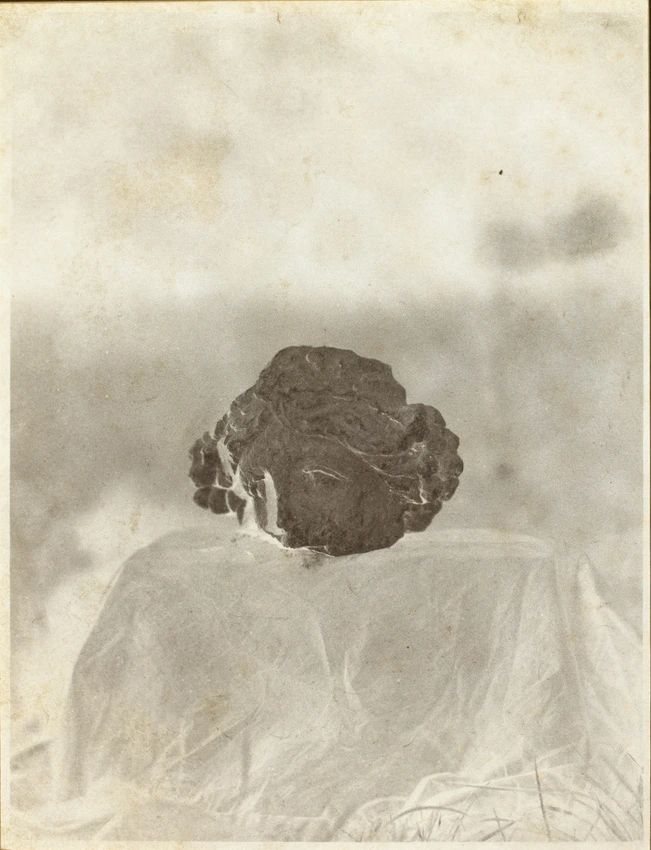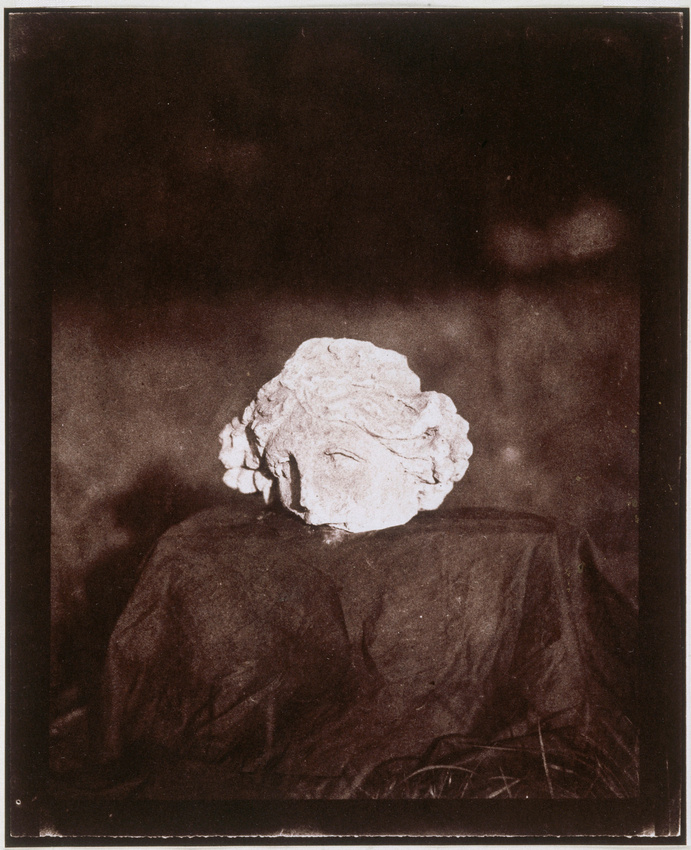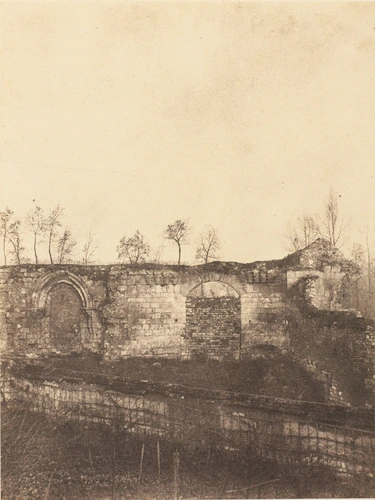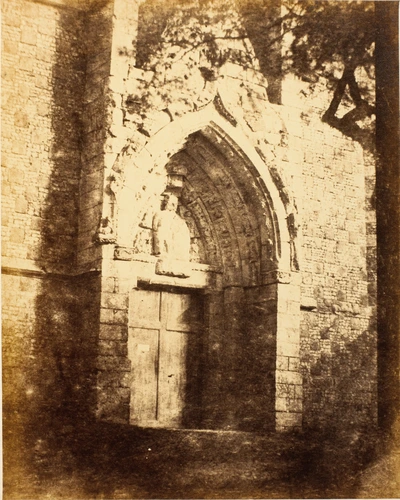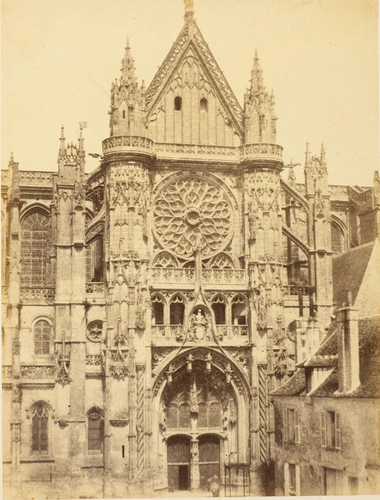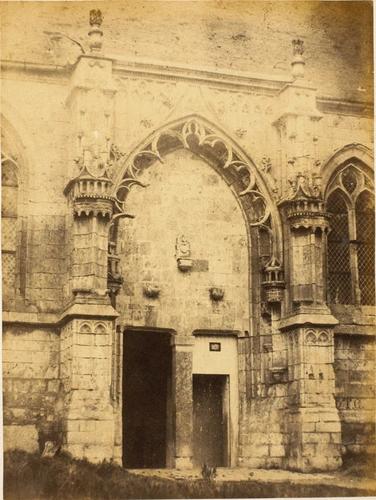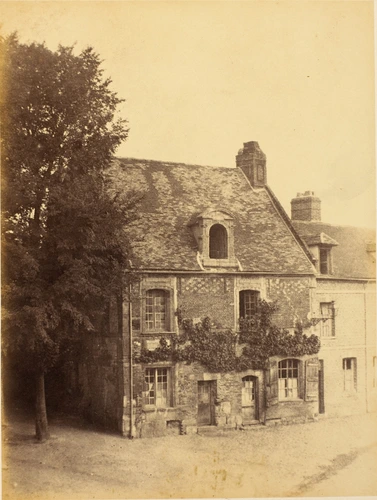Sculpture, fragment d'une tête
This photograph comes from a set comprising an album of eighteen salted paper or albumen prints of the monuments around Beauvais and sixty-three paper negatives of excavations on the Gallo-Roman site of Champlieu near Beauvais.
The excavations, which began in March and April 1850, were interrupted a few years later and then resumed in 1857 under the direction of the Historic Monuments Commission. Supervised by Viollet-Le-Duc, Mérimée and Saulcy, the second excavation campaign unearthed a theatre which probably dates from the third century AD.
The image is typical of the early years of archaeological photography, particularly in its taste for close-ups. The same feature is found in the work of famous archaeologist-photographers of the time such as Auguste Salzmann (1824-1872) or Théodule Devéria (1851-1871).
The scientific treatment of this piece, a fragment of the head of a young woman, has not excluded a poetic dimension. Although we cannot be sure whether the print was made during the first or the second excavation campaign, the sculpture is probably a vestige from the theatre. Emile Esperandieu, who wrote a book on the Champlieu ruins in 1915, thought that the head, with its crown of ivy leaves, was a representation of Ariadne.
